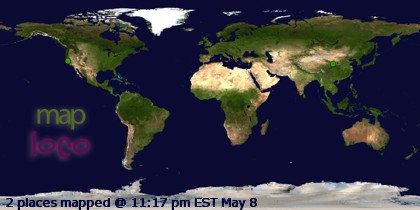I was asked recently by a friend in California who was looking to buy a replacement washing machine "how do I know where it is made?" Google's a wonderful thing. 2 minutes later, I had these two useful sites:
Still Made In The USA
and
Americans Working
Now, I am not a protectionist. My elderly 2nd cousin who died many years ago used to mock my Ohio built '88 Honda Civic (that had 75% US content in it) calling it a "Rice Burner" while his Mercury Topaz was made in Mexico (with 50% US content) - he fought in WWII in the Pacific on Saipan and Tinian and lost several toes to jungle rot... so I could understand his negative bias. My Civic was the only car to start at family gatherings, during several Chicago Christmases and New Years visits, in the late '80s and early '90s... but I digress.
I do try to purchase quality products, and often check tags looking for the country of manufacture. Typically, I find "China", but recently when I was shopping for gardening gloves I also found Pakistan, Sri Lanka, Vietnam, and Bangladesh - the Mexicos of Southern Asia. When I am purchasing a durable good, I try to keep in perspective
a) who designed it? is it a core competency of that company?
b) who manufactured it, and where?
c) is the country of origin one that typically produces consistent, superior quality this century (Japan, Germany, North America, Norway, the rest of the EU [besides Germany], Suisse, sometimes South Korea, sometimes Brazil & Argentina, sometimes Malaysia)?
d) if the country of origin is not one that produces superior quality, how committed is the name brand HQ to quality and customer retention?
e) how hard is it for the HQ's country to send supplier quality engineers to the low cost country?
The US, under Republican leadership at the end of the last and the beginning of this century, has become primarily a Service Providing country, not a core manufacturing country. Most of the core manufacturing was driven off-shore by cost focused MBAs who were looking for their next quarter's bonus instead of the longevity of their corporation and their customer base's loyalty. Services, in turn, are often more readily out-sourced, turning more of the US into a country of unemployed & angry consumers with no credit, who used to work in manufacturing, or knew a relative who used to at one time. Why I myself have worked in audio speaker & medical device plants in Indiana that have moved to China and Mexico, and capacitor plants in South Carolina that have moved to China, in the last 2 decades.
Big things (tires, semi truck trailers), heavy things (cement, bricks, gravel, wind turbines, asphalt) and delicate things (glass), are harder and more expensive to import. Laundry Dryers are light and full of air, but many manufacturers still try to make them in China or other "low cost" countries. Laundry Washers and Refrigerators are much heavier... so it is harder to determine where they are 'probably' made. The fridge, washer, and dryer in our Phoenix home that we purchased the day of closing, branded with a US manufacturer's label, that in the 80s and 90s USED TO be made in Bloomington IN (fridges) and Louisville KY (washers & dryers) were made in Korea, Mexico, and China in 2003... yeah. Seriously.
When in doubt, on an appliance, to identify where it was made, look
- inside the door
- along the back of the appliance, where the model number and (hopefully) serial number are located
- if it is questionable, it might be stamped on the bottom or printed inside a sheet metal panel, and the marking very hard to find [re: Myanmar, Iran, etc]
If anyone knows of a nice website that shows where ANYTHING is made, globally, or shows the countries or origin of the components, please let me know. I've not found a convenient source for that sorta information.
10 years ago

No comments:
Post a Comment
Note: Only a member of this blog may post a comment.